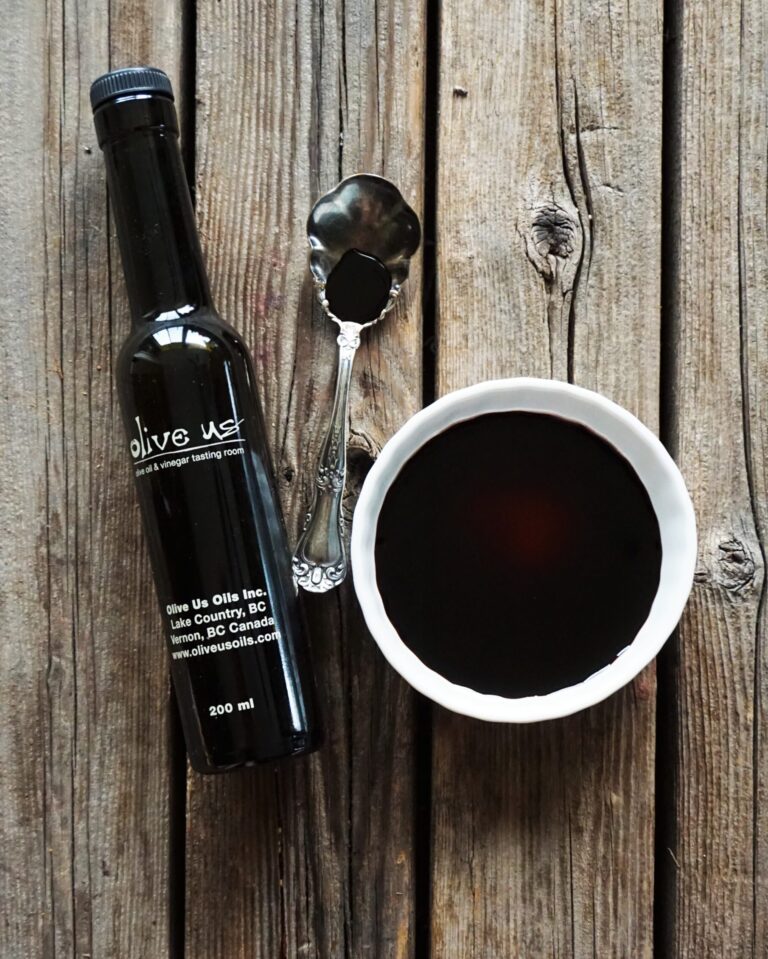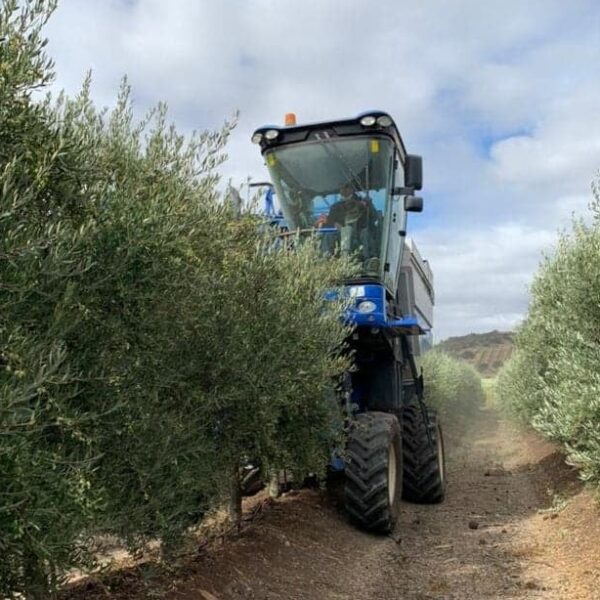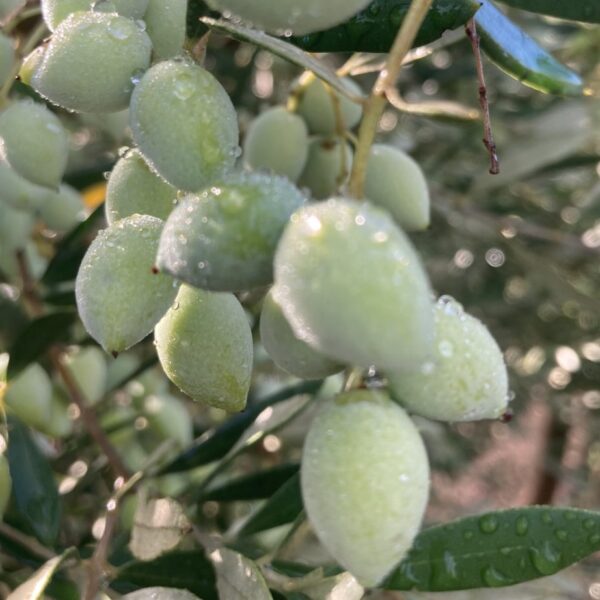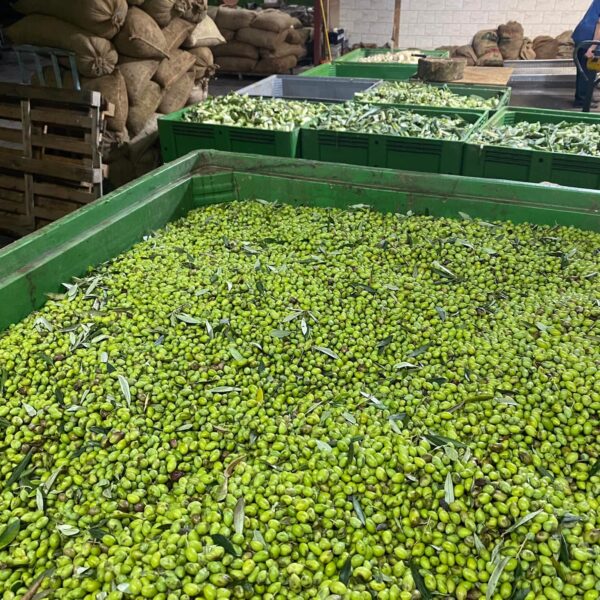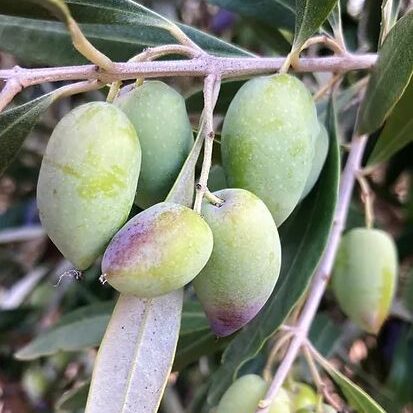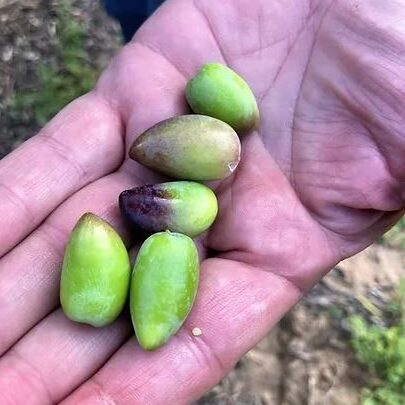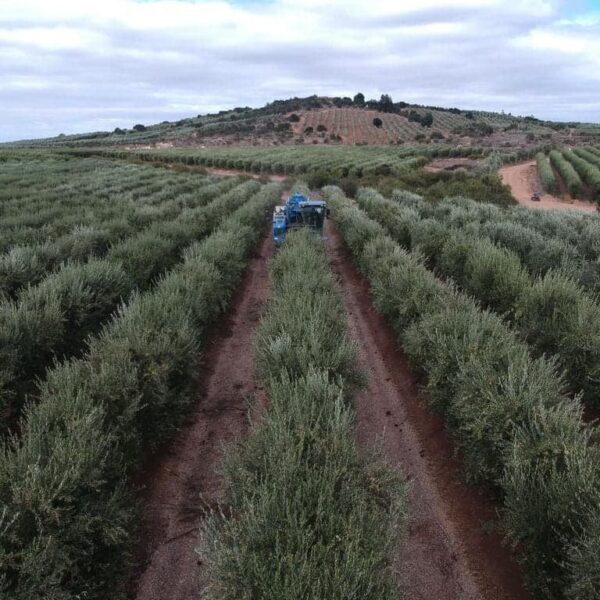
FREQUENTLY ASKED QUESTIONS
EVOO is made from the first mechanical crush of the olive at 27C or less. You can think of EVOO as the juice of the olive: the fresher, the better!
- EVOO has much higher chemistry standards (ours is called Ultra Premium)
- EVOO has no taste defects, unlike virgin olive oil
- EVOO requires no chemical or heat extraction, bleaching, deodorizing, or degumming, unlike pure, light, and extra-light olive oils (which are refined oils)
UP is the highest standard of olive oil in the world. It is third-party tested to ensure the chemistry and taste of the olive oil is top quality. It is traceable and single-origin.
This is olive oil that comes from a single type of olive and is not blended (ie. Kalamata from Greece).
Early harvest olives are picked before they are fully ripe. These olives have less oil, but the nutrient content (ie. polyphenols) of the oil is more concentrated. This is what we sell at Olive Us!
Fresh, early harvest olives are packed with health promoting compounds called phenols that protect the oil. These phenols also protect us! They have antioxidant (fights damage to cells), antimicrobial (prevents harmful invaders), and anti-inflammatory (reduces inflammation) properties.1 Further benefits are shown through EVOOs main role in the Mediterranean diet, which has been shown to reduce the risk of cardiovascular diseases, heart attack, cancer, and diabetes among other chronic diseases.2
You can find more on the health benefits of EVOO at https://olivewellnessinstitute.org/extra-virgin-olive-oil/health-benefits-of-extra-virgin-olive-oil/
- Cicerale S, Lucas L, Keast R. Antimicrobial, antioxidant and anti-inflammatory phenolic activities in extra virgin olive oil. Current opinion in biotechnology. 2011;2012;23:129-135.
- Dinu M, Pagliai G, Casini A, Sofi F. Mediterranean diet and multiple health outcomes: an umbrella review of meta-analyses of observational studies and randomised trials. EUROPEAN JOURNAL OF CLINICAL NUTRITION. 2018;72:30-43.
Polyphenols are antioxidants in the oil that help our bodies fight oxidative stress. This is a major player in why EVOO is so healthy. But not all olive oil is created equally! Growing conditions, harvest, processing, and bottling all affect polyphenol levels. We are proud to say that all the EVOOs we carry are high polyphenol oils— and we’ve got the chemistry to prove it!
Olive Us Ultra-Premium EVOOs start by growing healthy olives in the grove! Our oils are early harvest, so the olives are picked when they’re largely green, providing the highest antioxidant level and health benefit. Olives are typically collected using a harvester machine that goes row-to-row and brushes the olives off the tree and into a collecting container. However, depending on the size of the tree some of our oils are made using hand-picked olives. After harvest, producers have 3-4 hours to get their olives to the mill and have them crushed.
At the mill, olives are first added to the hammer crusher, pit and all, to be crushed into a paste. This paste enters a malaxer, a machine with a large auger that turns through and separates the oil and water from the solids. The liquids are then centrifuged to separate the oil from the water. The oil is centrifuged again to separate particulate (ie. tiny pieces of pit and olive skin) from the oil. The oil then goes through a process called racking where it sits in large stainless-steel tanks for a number of days to allow more particulate to sink. Then it’s ready to go on your plate!
Because our EVOO is not filtered, it’s normal to see some cloudiness in your oil. This changes batch-to-batch depending on the oil but it’s completely normal— fear not!
Long story short, our EVOOs are cold-crushed.
Wondering why we don’t say cold-pressed? This is an outdated term for olive oil since most olives are no longer “pressed”, they’re crushed. This can make an important difference to the quality of oil since the matts used to press olives (imagine a stack of carpet-like matts stacked together with olives in between) aren’t always replaced between batches, allowing rancid oil to build up in them. The pressing process is also much slower than crushing and time can be an enemy to the quality of olive oil. Some small mills and olive co-ops still use the olive press to allow small-scale producers to crush their olives, but for the most-part all olive oil is now made through crushing.
Where does the “cold” part come from? This is used to designate oils that are made at 27C or lower. All of our EVOOs are produced under this temperature, allowing the antioxidants to remain intact. This is a key health benefit to EVOO and separates it from its refined counterparts: pure, light, and extra-light olive oils. Refined oils require heat or chemicals to remove more oil from the paste. This destroys antioxidants and other health benefits of the oil as well as flavour compounds.
Like wine, many countries in the world produce fantastic olive oil! Since the Northern and Southern hemispheres have opposite growing seasons, Olive Us receives a fresh harvest of EVOO every 6 months from countries such as Spain, Portugal, Tunisia, Italy, USA (California), and Greece in the North, and Chile, Peru, South Africa, and Australia in the South. Look for the crush date of your EVOO rather than the expiry date and aim for one that is no more than one year old.
At Olive Us we follow the growing seasons in the two hemispheres. In Oct/Nov the Northern Hemisphere olives are crushed (Spain, Portugal, Greece, Italy etc) and in April/May the Southern Hemisphere olives are crushed (South Africa, Australia, Chile, Peru etc). This ensures you are buying the freshest olive oil possible!
For the best health benefit, we recommend consuming your EVOO within a year and a half of its crush date (ie. 8-14 months from when you buy it from Olive Us). We receive a fresh crush of EVOO every 6 months, allowing you to follow the Northern (fall) and Southern (spring) harvests to get the highest health benefit from your EVOO.
All un-refined oils will degrade over time, causing rancidity (smells like old lipstick or crayons) and lowered health benefits. If you have rancid oil at home, it’s best used on creaky door hinges than for eating.
To keep your EVOO fresh keep it away from heat, light, and air. Ensure your EVOO is in a dark colored bottle, store it in a cool, dark cupboard away from the stove, and make sure the lid is on.
Yes! You can sauté, fry, roast, and bake with EVOO! Recent research has shown fresh, high-antioxidant EVOO to be the most stable oil when heated compared to other common cooking oils.1
For more info on cooking with EVOO please visit: https://olivewellnessinstitute.org/extra-virgin-olive-oil/cooking-with-olive-oil/
- Guillaume C, De Alzaa F, Ravetti L. Evaluation of Chemical and Physical Changes in Different Commercial Oils during Heating. ASNH. 2018; 2.6: 02-11.
Take a peek for yourself! Visit https://olivewellnessinstitute.org/comparison/ to compare common cooking oils for their health benefits, best uses, and how they’re made.
Fused (Agrumato) olive oil is flavoured by crushing the olives with whole foods such as citrus fruits, spicy peppers, or herbs. Our line-up of fused olive oils includes Blood Orange, Lemon, Baklouti Green Chili, Cayenne, Rosemary, and Leek.
Infused olive oil is flavoured by adding natural botanicals or extracts to EVOO which allows multiple flavours to come into play! Our line-up of infused olive oils includes Tuscan Herb, Milanese Gremolata, Herbs de Provence, Wild Mushroom & Sage, Cilantro & Roasted Onion, Butter, Garlic, Basil, Dill, Persian Lime, Chipotle, Harissa, and Olivewood Smoked Olive Oil.
You can find our Fused and Infused olive oils in-store or online at https://shop.oliveusoils.com/oils/olive-oil/fused-and-infused/
Yes! Our olive oils are actually FODMAP-free, so you can eat them freely even during the elimination phase of your low-FODMAP diet. This includes our Garlic Olive Oil, Cilantro & Roasted Onion Olive Oil, and our Leek Fused Olive Oil. So, if you’re missing those amazing savory flavours please come pay us a visit! It’s a game-changer to make your food more flavourful and empower you to get creative despite the food limitations of this diet.
Balsamic Vinegar
Balsamic vinegar is made in Modena Italy from aged grape must from 3 different sweet white grapes. Grape must is the crushed juice, seeds, skins, and stems of the grape. Olive Us balsamic is made using grape must and a small amount wine vinegar to kickstart the fermentation process. Using the Solera Method, the grape must is cooked in copper kettles and then aged in a series of 5-7 different wooden barrels. Rather than sealing these barrels which would allow the microorganisms to make alcohol (anaerobic fermentation), the barrels have airflow allowing the microorganisms to make acid (aerobic fermentation).
The balsamic from the last (oldest) barrel in the series is partly poured off and the balsamic from the previous (younger) barrel is added to fill it up again and so on until fresh grape must is added to the first (youngest) barrel. This process takes a number of years and the vinegar picks up on the flavours of the different wooden barrels. Olive Us dark balsamic vinegar is aged up to 18 years and our white balsamic vinegar is aged up to 12 years.
You can find our balsamic vinegars in-store or online at https://shop.oliveusoils.com/vinegars/
Olive Us dark balsamic vinegars are made using grape must that is cooked at a higher temperature, allowing it to caramelize and develop a deep colour*. From there, they are aged for up to 18 years in a series of 5-7 different aged and charred wooden barrels. This allows them to pick up on the flavours of the various types of wood to develop a rich flavour profile.
Olive Us white balsamic vinegars are made using grape must that is cooked at lower temperatures, so that it doesn’t caramelize. From there, they are aged up to 12 years in a series of 5-7 different fresh wooden barrels. They too pick up on the flavours of the various types of wood, but they end up with a brighter, zestier flavour as opposed to the deep, rich flavour of the dark balsamic.
*Unlike many producers who add caramel colouring to their balsamic to get this deep colour, Olive Us balsamic vinegars are free of caramel colouring— we prefer them natural!
Olive Us infused balsamic vinegars are made using natural botanicals and extracts with no artificial flavours or sweeteners. These flavours are added after the aging process. Our Traditional Dark Balsamic is the base for our infused dark balsamic vinegars and our A-Premium White Balsamic is the base of our infused white balsamic vinegars.
Our balsamic vinegars contain no added sugars! Just the naturally occurring sugars of the grape. They may taste sweeter than some balsamic vinegars you’ve tried because of their low wine vinegar content. Many balsamic vinegars contain high percentages of wine vinegar, and this makes them more acidic. We love the deep, rich flavour of our dark balsamic and the bright, zesty flavour of our white balsamic!
If you are looking for a more acidic or less sweet balsamic, we do have several that fit the bill! Try our Neapolitan Herb Dark Balsamic or our Oregano, A-Premium, Apricot, or Honey Ginger White Balsamic.
We also carry several wine vinegars and a honey vinegar that are not made with sweet grape-must. These include Barrel Aged Red Wine Vinegar, Sherry Reserva Wine Vinegar, Champagne Wine Vinegar, and Serrano Honey Vinegar (spicy!).
You can find our balsamic vinegars in-store or online at https://shop.oliveusoils.com/vinegars/
Skip out on the store-bought glazes and reductions, which are often thickened using syrups, added sugars, or corn starch and coloured with caramel colouring— making your own reductions is easy-peasy! Add your Olive Us balsamic (about 1 cup works well to start with) to a saucepan and simmer over medium-low heat for 15-20 minutes, stirring frequently and keeping an eye out that it does not start boiling. Remove from heat. As the balsamic cools it will start to thicken. Your reduction should be thick enough to coat the back of a spoon and thin enough to drizzle. You can put it back in the bottle or a pour-able container and store it with your other balsamic vinegars!
Alternatively, if you’re looking for an extra easy way to make a reduction you can pour 1/3 to 1/2 cup of balsamic into a shallow bowl and leave it on the counter* for a day or two. The liquid will start to evaporate, and the balsamic will thicken into a reduction-like consistency.
Easiest of all, we carry a 25-year aged dark balsamic called Denissimo that is perfect for drizzling over your favorites like bruschetta, caprese salad, grilled meats, and pizza! You can find it in-store or online at https://shop.oliveusoils.com/denissimo-balsamico-certified-136density.html
*Make sure to loosely cover the bowl with a paper towel or cloth so that fruit flies aren’t attracted!
We have many fruity flavoured balsamic vinegars, but when you’re looking for something more savoury we have several to offer!
Dark balsamic: Neapolitan Herb, Espresso
White balsamic: Oregano, Lemongrass Mint, A-Premium, Ultra Premium
Honey vinegar: Serrano Honey (spicy!)
Specialty vinegars: Champagne Vinegar, Sherry Vinegar, Red Wine Vinegar
Balsamic can be stored at room temperature in a dark, cool place.
Balsamic vinegar continues its aging process in the bottle and can become a little more acidic over time. While it won’t “expire” we recommend using them within two years of purchase for the best flavour.
You may find some cloudiness or a small, clear clump in your balsamic after some time (this is more noticeable in white balsamics), this is called a Mother. Like a SCOBY in kombucha, Mother is developed from the microbes that ferment vinegar. The balsamic is still safe to use if a Mother forms, you can just discard the clump and continue using your vinegar.


